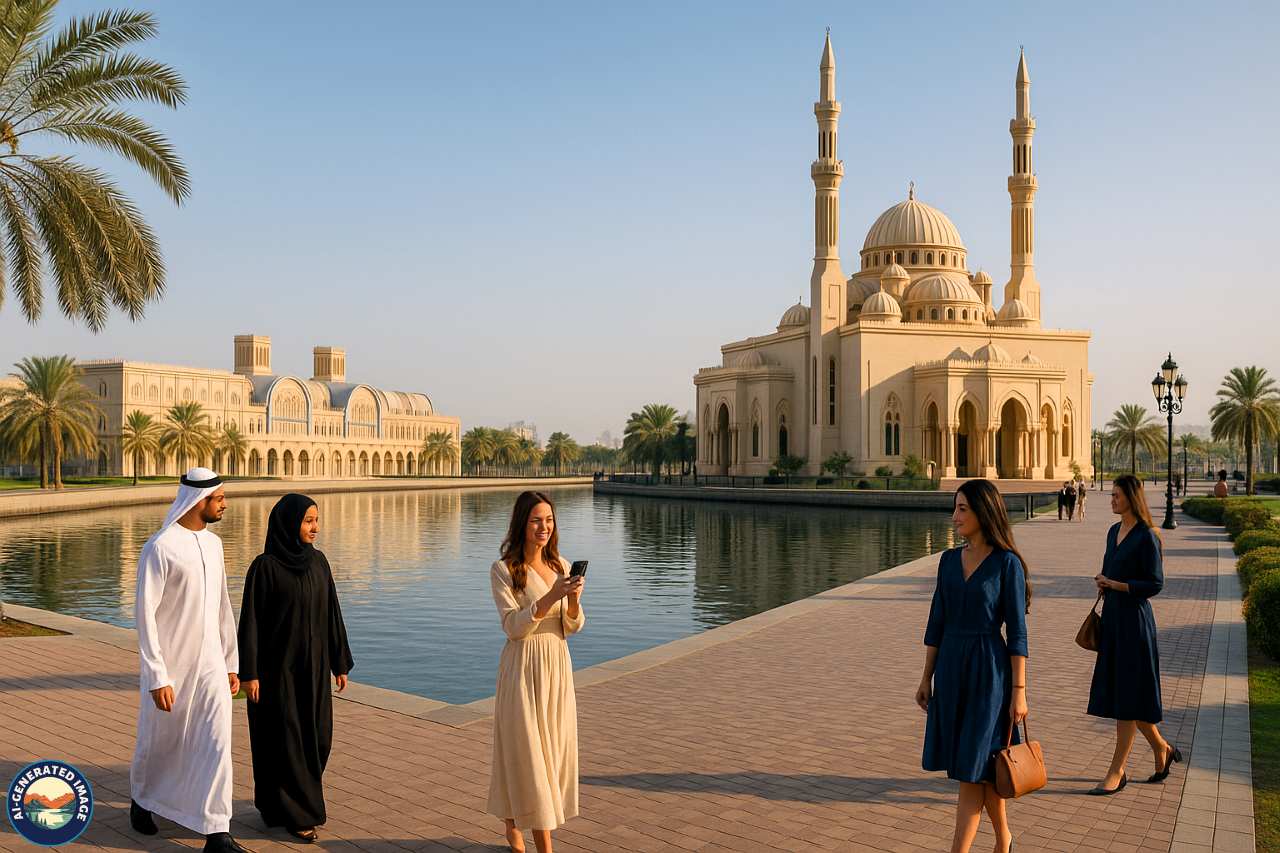Introduction
Often overshadowed by its glamorous neighbors, Sharjah is a serene and culturally rich emirate offering a distinctly different perspective of the UAE. Recognized as the Cultural Capital of the Arab World by UNESCO in 1998, Sharjah is a treasure trove of art, heritage, and tradition. Unlike Dubai’s futuristic skyline or Abu Dhabi’s grandeur, Sharjah prides itself on preserving the soul of the Emirates. From captivating museums and restored heritage areas to family-friendly attractions and pristine beaches, Sharjah is an ideal destination for those seeking authentic experiences.
This article explores everything you need to know about visiting Sharjah—from its ancient roots and cultural landmarks to travel tips and culinary delights.
A Glimpse into Sharjah’s History and Heritage
Sharjah’s history dates back over 6,000 years, making it one of the oldest continuously inhabited places in the region. Historically, it served as a bustling trade and maritime hub, with close ties to India, Persia, and the East African coast.
While modern development has transformed much of the UAE, Sharjah remains rooted in its traditions. The emirate is a leader in cultural preservation, thanks to the ruling Al Qasimi family’s commitment to heritage. Museums, archaeological sites, and restored buildings reflect a deep respect for Emirati identity.
In 1998, UNESCO named Sharjah the Cultural Capital of the Arab World and later, in 2014, the Islamic Culture Capital, confirming its leadership in cultural and religious heritage.
Must-Visit Attractions
Sharjah Museum of Islamic Civilization
Located along the Al Majarrah Waterfront, this museum is one of the most comprehensive Islamic institutions in the world. Its exhibits showcase over 5,000 artifacts, ranging from ancient manuscripts to astronomical instruments and textiles. The museum’s domed architecture is a marvel in itself, symbolizing the Islamic Golden Age.
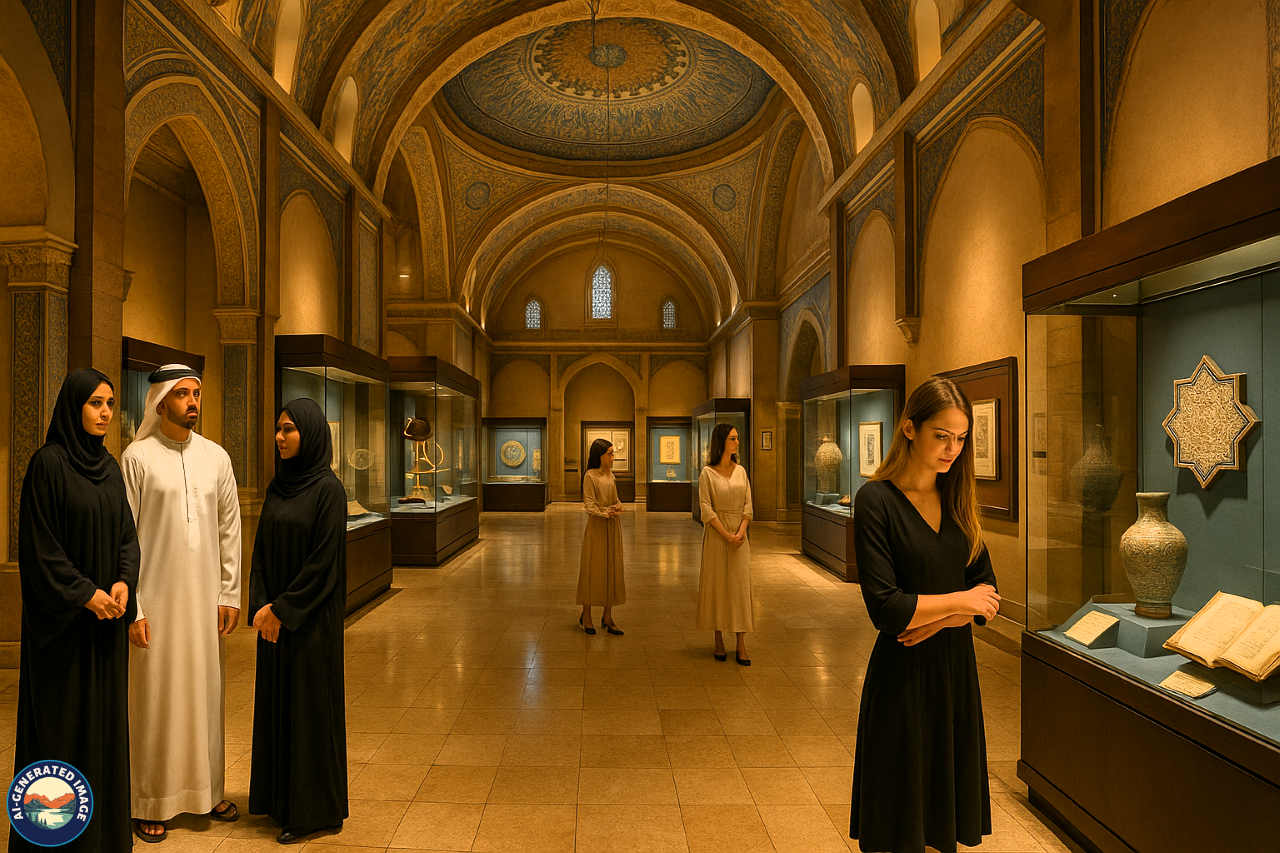
Sharjah Art Museum
For art lovers, this museum is a haven. Home to a vast collection of contemporary and classic Middle Eastern art, it regularly hosts exhibitions and artist residencies. It is also the hub of the Sharjah Biennial, an internationally acclaimed art event.
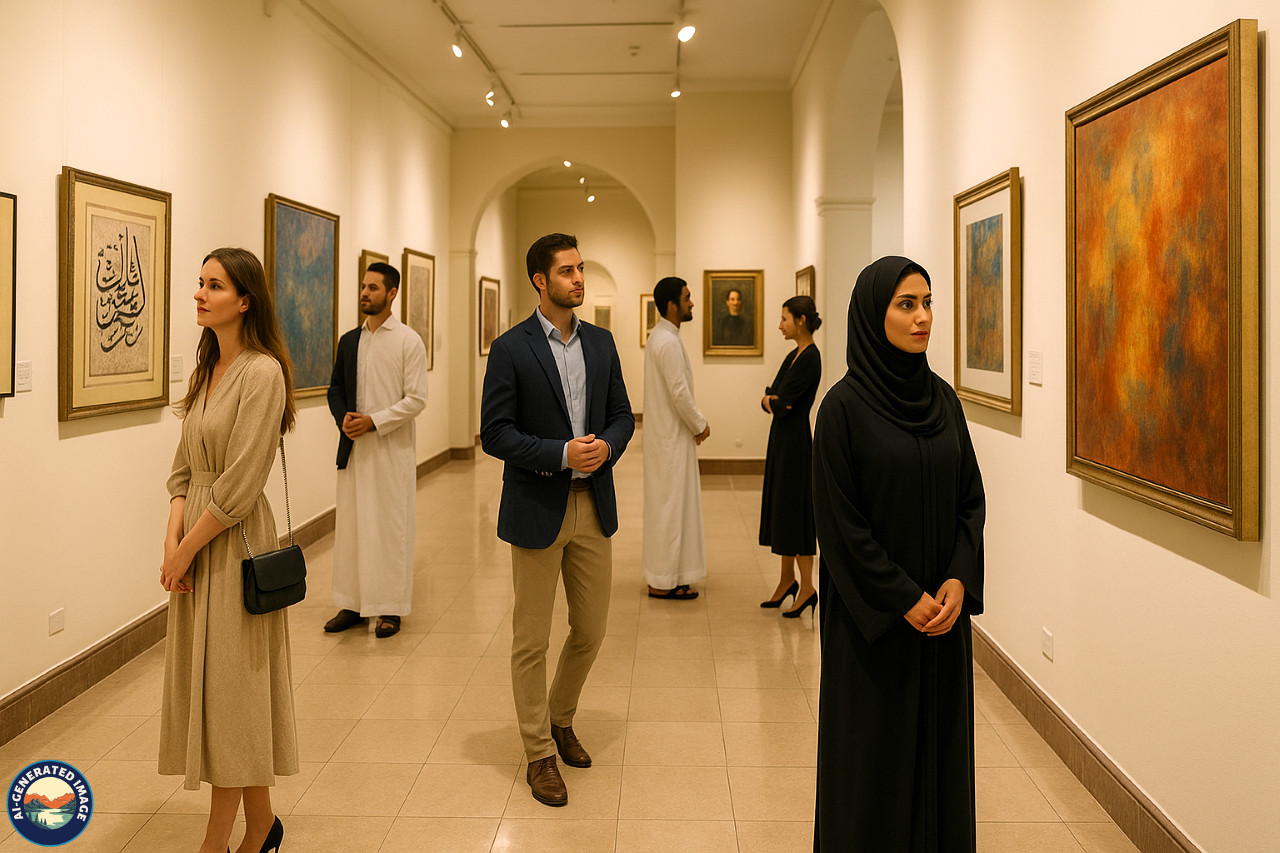
Al Noor Island
A fusion of nature, art, and architecture, Al Noor Island offers a tranquil escape in the heart of the city. Walk through its lush gardens, explore the Butterfly House, and admire installations by renowned artists like André Heller. The island is especially enchanting at night with its illuminated art trails.
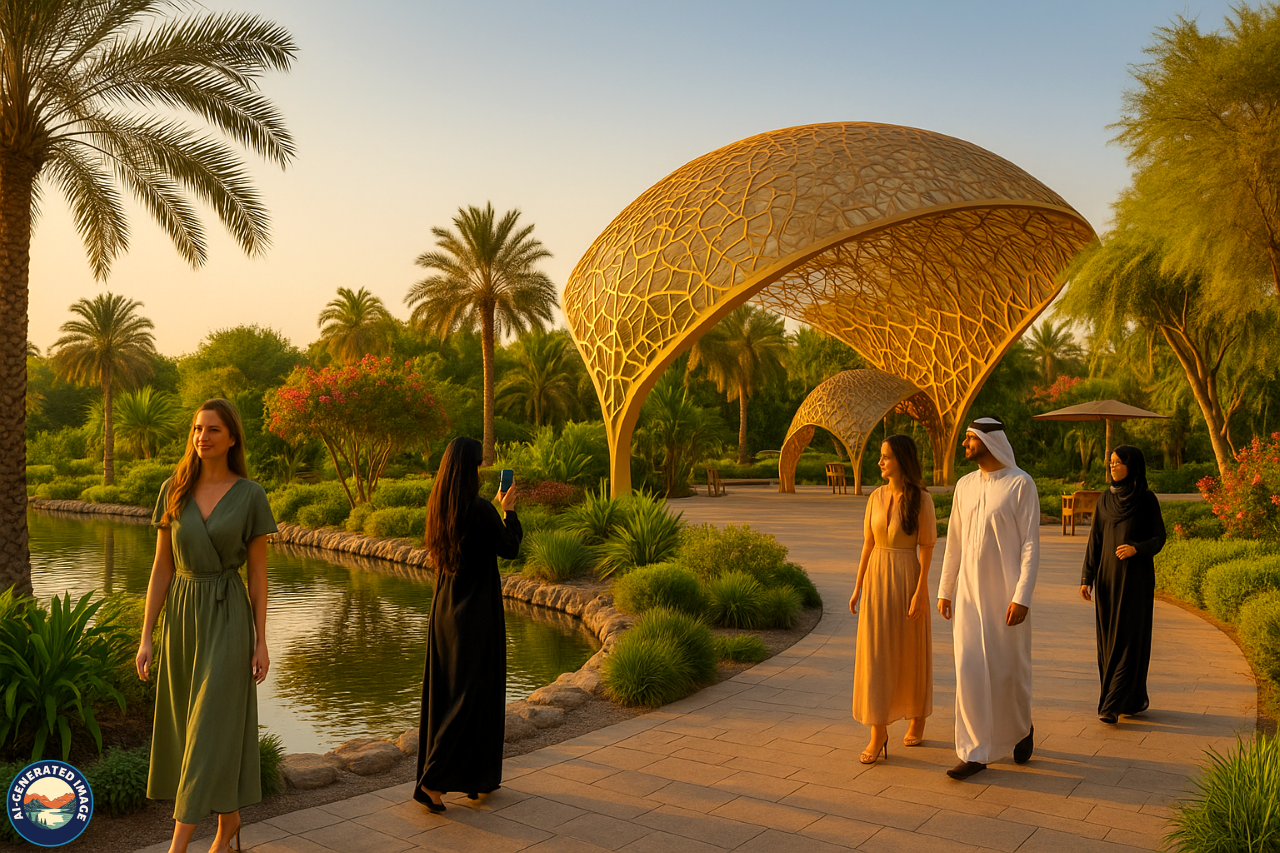
Sharjah Aquarium & Maritime Museum
Located in Al Khan, these two attractions offer an immersive dive into Sharjah’s seafaring past. The aquarium showcases over 150 species of marine life, while the maritime museum exhibits ancient dhows, navigational tools, and traditional fishing gear.
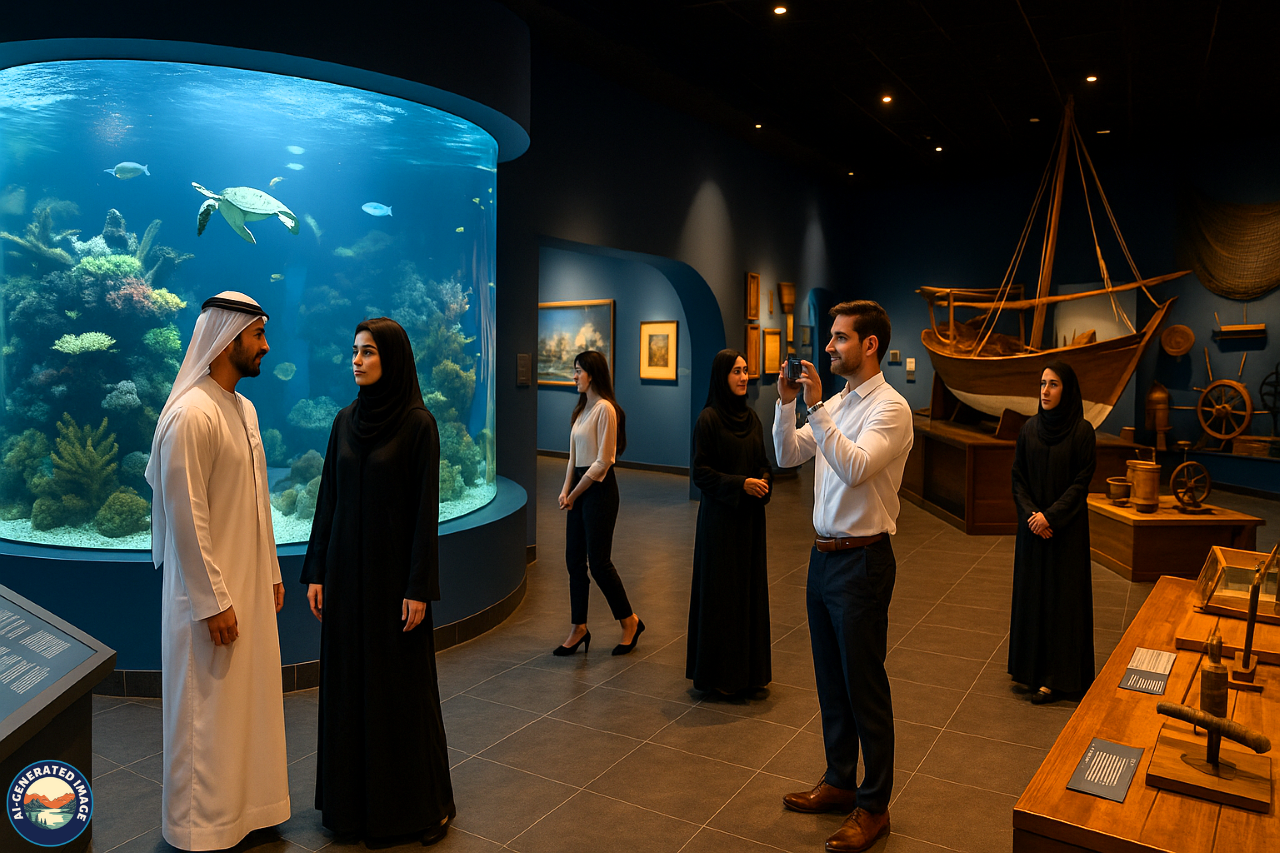
Heart of Sharjah
This heritage project aims to restore Sharjah’s old town to its 1950s state. Cobblestone streets, wind-tower houses, and restored souks transport visitors back in time. It’s also home to the Sharjah Heritage Museum, Calligraphy Museum, and Al Hisn Fort.

Mleiha Archaeological Centre
Located in the desert, Mleiha is a window into prehistoric Arabia. The center features Bronze Age tombs, ancient fossils, and archaeological digs. Visitors can enjoy desert safaris, stargazing tours, and even camel rides amid dramatic landscapes.
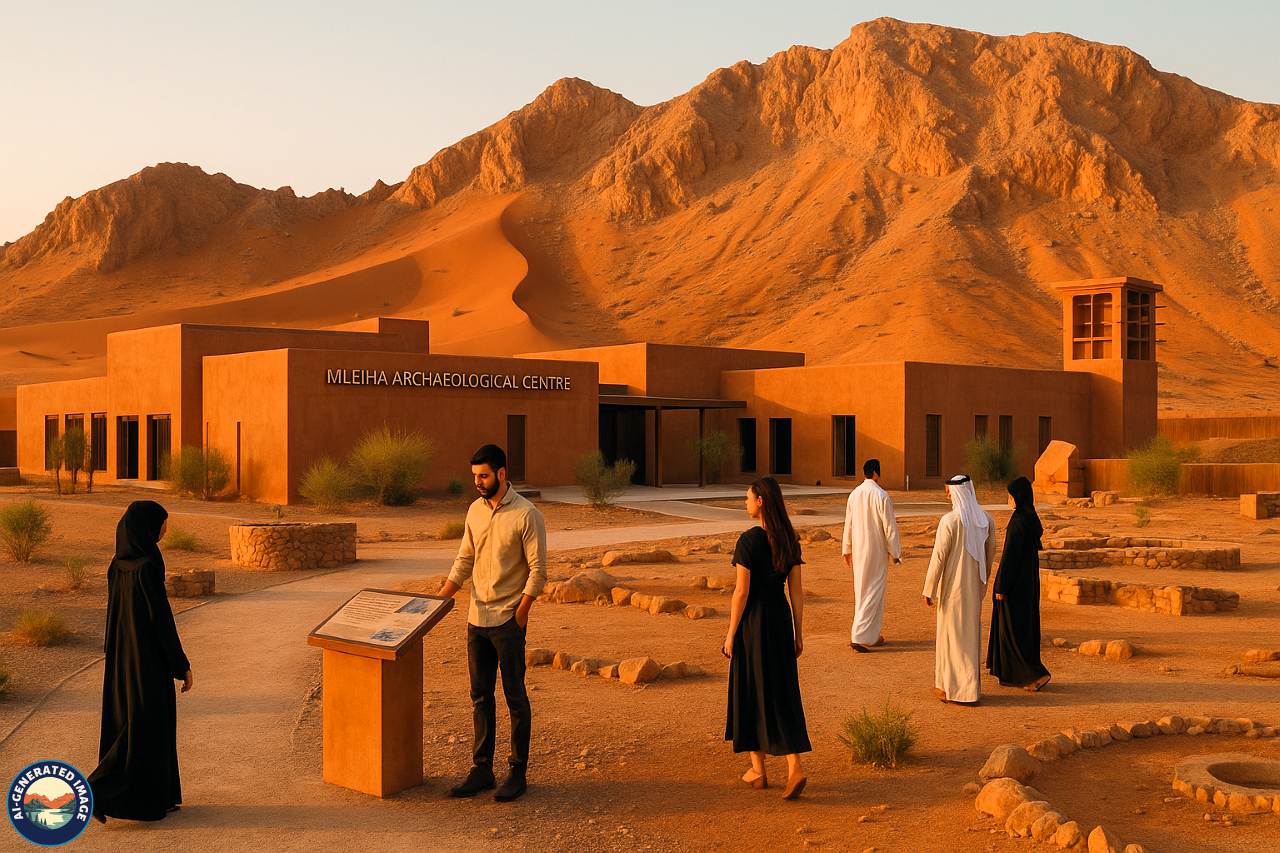
Sharjah’s Vibrant Arts and Cultural Scene
Sharjah’s identity is deeply intertwined with the arts. The Sharjah Art Foundation supports contemporary art through exhibitions, performances, and workshops. Its spaces in the Al Mureijah and Al Shuwaiheen districts blend modern aesthetics with traditional architecture.
The Sharjah Biennial, held every two years, attracts global artists and critics, fostering dialogue between cultures and challenging artistic boundaries.
Moreover, institutions like the House of Wisdom and the Sharjah Book Authority reinforce the emirate’s dedication to intellectual growth and literary exploration.
Theatres, including the Sharjah National Theatre, regularly host Arabic plays, poetry readings, and musical concerts, reflecting the emirate’s passion for cultural storytelling.
Exploring Traditional Souks and Modern Malls
Blue Souk (Central Market)
With its twin blue domes and intricate Arabic design, this market is one of Sharjah’s most iconic landmarks. Inside, over 600 shops offer everything from gold and gemstones to Persian carpets, antiques, and souvenirs.
Souk Al Arsah
Considered the oldest market in the UAE, this souk is a maze of coral brick walls, wooden doors, and traditional Emirati items such as oud, spices, and handcrafted jewelry. Walking through it feels like stepping into a bygone era.
Modern Shopping Experiences
For those craving modern retail therapy, Sahara Centre, Mega Mall, and City Centre Sharjah house international fashion brands, entertainment zones, and diverse dining options.
Outdoor Activities and Natural Escapes
Al Majaz Waterfront
This vibrant recreational complex offers landscaped walkways, a musical fountain, jogging tracks, and restaurants with waterfront views. It is also a popular venue for cultural festivals and fireworks.
Kalba and Khor Fakkan
On Sharjah’s east coast lie two stunning enclaves perfect for a weekend escape. Khor Fakkan boasts crystal-clear beaches and coral reefs ideal for snorkeling and kayaking. Kalba, on the other hand, is known for its mangrove forests and the Kalba Conservation Reserve, home to rare bird species.
Desert Adventures
The surrounding desert offers thrill-seekers a chance to go dune bashing, quad biking, or sandboarding. Visitors can join night safaris that include stargazing and storytelling under the stars—especially popular at Mleiha.
Culinary Delights: What to Eat
Sharjah’s food scene mirrors its cultural ethos—authentic, rooted, and diverse. Traditional Emirati dishes such as:
-
Machboos (spiced rice with meat or fish)
-
Harees (wheat porridge with meat)
-
Luqaimat (sweet dumplings drizzled with date syrup)
are must-tries.
For an upscale Emirati dining experience, Al Fanar Restaurant provides authentic settings and menus. Local favorites like the Sharjah Dhow Restaurant offer meals aboard traditional boats.
Cafés along Al Majaz Waterfront and Al Qasba serve Arabic coffee, desserts like kunafa, and international fusion dishes. Food trucks and beachfront eateries in Khor Fakkan and Kalba are also gaining popularity among younger crowds.
Family-Friendly and Educational Attractions
Sharjah is a haven for families with children:
-
Al Qasba:
-
A canal-side leisure destination with a giant Ferris wheel, boat rides, and play zones
-
Sharjah Discovery Centre:
-
A hands-on science and play museum for children aged 3–12
-
Sharjah Science Museum:
-
Features interactive exhibits on physics, space, and electricity
-
Butterfly House on Al Noor Island:
-
A glasshouse filled with colorful butterflies and exotic plants
These attractions blend fun and education, making Sharjah an ideal destination for family vacations.
Religious and Architectural Wonders
Sharjah is home to some of the UAE’s most beautiful mosques:
-
Al Noor Mosque:
-
Open to non-Muslim visitors during guided tours, this Ottoman-style mosque offers insights into Islamic culture and architecture
-
King Faisal Mosque:
-
The largest mosque in Sharjah with a capacity to accommodate 16,000 worshippers. Its modernist design is striking
-
Sharjah Mosque (on Kalba Road):
-
Opened in 2019, it is one of the newest and most visually captivating mosques in the region
Architecturally, the city combines modern buildings with traditional Emirati design elements such as wind towers, mashrabiya screens, and coral stone.
Tips for Visiting Sharjah
-
Best Time to Visit:
-
October to April, when temperatures are pleasant and outdoor events are frequent
-
Dress Code:
-
More conservative than Dubai. Both men and women are encouraged to dress modestly, especially in public areas
-
Transport:
-
Taxis are affordable and widely available. Public buses are improving, but are limited in some areas
-
Accommodation:
-
Options range from budget-friendly hotels to luxurious beachfront resorts in Khor Fakkan
-
Alcohol Policy:
-
Alcohol consumption is strictly prohibited in Sharjah, in line with its Islamic values
-
Language:
-
Arabic is the official language, but English is widely understood in tourist areas
Sharjah vs. Dubai: A Comparative Insight
While Dubai dazzles with skyscrapers and nightlife, Sharjah impresses with soul and substance.
| Aspect | Sharjah | Dubai |
|---|---|---|
| Vibe | Cultural, family-oriented | Cosmopolitan, entertainment-driven |
| Dress Code | Conservative | Liberal |
| Alcohol Policy | Prohibited | Permitted in licensed establishments |
| Attractions | Museums, souks, beaches, heritage sites | Malls, luxury hotels, and modern landmarks |
| Cost | Budget-friendly | Generally more expensive |
For a balanced UAE itinerary, pairing both cities offers the best of tradition and modernity.
Sustainable Tourism and Eco-Initiatives
Sharjah places a strong emphasis on environmental conservation and sustainability:
-
Wasit Wetland Centre:
-
A restored bird sanctuary featuring eco-friendly observation hides, home to over 200 species of migratory birds
-
Mleiha Desert Conservation:
-
Promotes archaeology-based tourism with minimal environmental impact
-
Al Hefaiyah Mountain Conservation Centre:
-
Showcases Arabian wildlife such as caracals, gazelles, and lynxes in a naturalistic mountain habitat
These initiatives reflect Sharjah’s vision for environmentally responsible tourism.
Conclusion
Sharjah is not just another emirate—it’s a soulful destination that honors the past while embracing the future. From ancient archaeological sites and Islamic art museums to family-friendly parks and quiet beaches, it offers something for every kind of traveler. The city’s commitment to culture, education, and heritage makes it a must-visit for those wanting to experience the true heart of the UAE.
Whether you’re a history buff, a nature lover, an art enthusiast, or a family on holiday, Sharjah welcomes you with grace, warmth, and authenticity.
FAQs
Is Sharjah worth visiting compared to Dubai or Abu Dhabi?
Yes, Sharjah offers a more authentic and culturally rich experience with a focus on heritage, making it an excellent destination for those interested in art, history, and family activities.
Can tourists drink alcohol in Sharjah?
No. Sharjah is a dry emirate, and alcohol consumption is prohibited in public and private establishments.
Is Sharjah suitable for families with children?
Absolutely. The emirate is full of interactive museums, parks, and waterfront attractions that cater specifically to children and families.
How far is Sharjah from Dubai?
Sharjah is about 30–45 minutes by car from Dubai, depending on traffic. It is easily accessible for day trips or longer stays.
What is the best time to visit Sharjah?
The best time is between October and April, when the weather is cooler and many cultural events and outdoor festivals take place.

